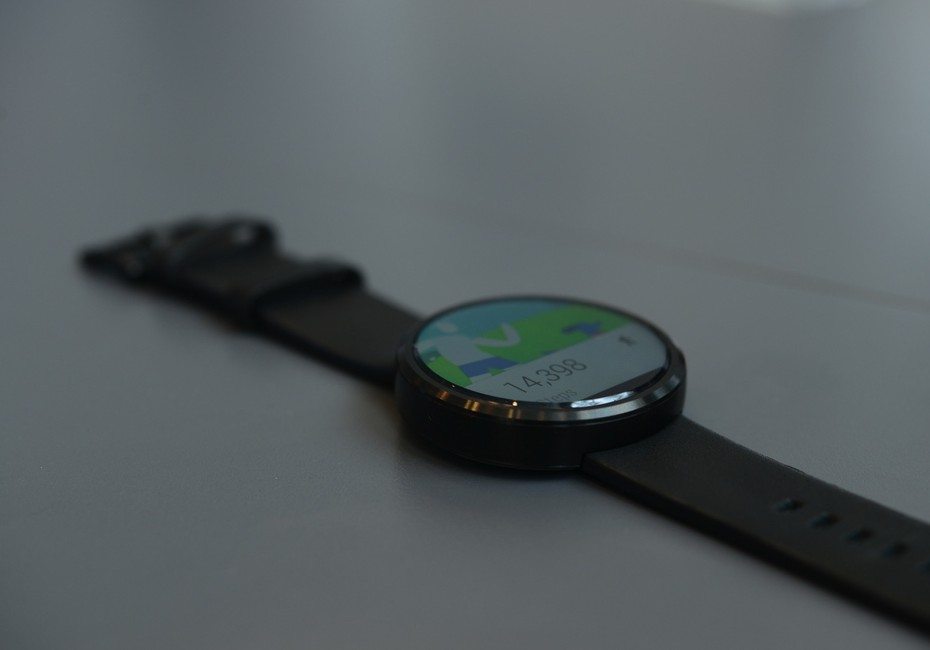
One thing we in the tech media often find amusing is when main stream journalists tackle new technology. Being on the fringe of the mainstream, sites like Ausdroid survive on our specialisation. We focus on one subject area, and (we like to think that) we focus on it well — for us, our focus is obviously Android, and more generally, mobile and wearable technology.
Smaller, niche news sites, like ours, don’t often get invites to the big shows; we haven’t in the past received sponsorship to attend CES, or media passes to cover Google I/O. We’re not upset about this — in fact, we’ve never really expected to have anything like this extended to us — but what we find bemusing is that the people companies do choose to send represent a really questionable return on investment.
What even is a smartwatch?
Take, for example, people who are sent to cover Google I/O (which we all knew was going to be about Android Wear) who have no concept of what wearable technology is designed to offer, and who opine about how useless it is, and how the latest and greatest from Android is really annoying, while looking forward to what Apple has around the corner.
My goodness. Do these people even understand the industry they claim to write about?
Smartwatches are not new. Even before the Pebble, there were Bluetooth compatible watches and other wrist-worn devices that would vibrate for incoming calls. I’m talking a couple of years here.
Pebble landed in the middle of 2013 for Australians, and it represented a big leap forward. Wearable technology that could display things from the Internet. Weather. News. Tweets. Football scores. We’ve had this capability, this technology, for at least a year now, and in other markets, for much longer. We in technology journalist land are certainly not new to this; we’ve had notifications buzzing away in our pockets, on our desks, on our computers, and on our wrists for what seems like forever.
The whole premise of these smart, wearable devices, is to connect us a little better with the technology around us. It seems so natural to pull out a mobile phone these days to check what you’ve missed, and it doesn’t (and didn’t) take a genius mind to consider that it might be easier to glance at a wrist than to pull out a much larger phone. Hell, Dick Tracey used his watch for quite a bit back in the day.
“This isn’t the answer.”
A certain author has told of his regular receipt of emails, tweets, text messages, Facebook alerts and more, and how these alerts are easily accessible via his smartphone. That’s great.
Android Wear, and other smartwatches such as the Pebble, Galaxy Gear, Gear 2, Gear 2 Neo, and countless others, are designed to bring the Internet off our phone, and onto our wrists. That’s their whole raison d’etre. If it weren’t for that intended purpose, there’d simply be little need for a smartwatch — measuring steps can easily be handled by a smartphone by itself, or by a companion Bluetooth step counter. Heart rate monitors have been around for years, and there are some that can interface with a phone, too.
In fact, if you don’t want notifications on your wrist, why are you bothering to look at a smartwatch at all? To wear a comparatively ugly piece of technology on your wrist instead of an exquisite hand-crafted Tissot timepiece? A slab of black plastic instead of stainless steel, or gold? Please.
Android Wear, and other smartwatches, are most definitely the answer, if you ask the right question.
Is a smartwatch the best watch I can wear to tell me the time? No. Is an elephant better for commuting in Sydney traffic than a car? Probably not.
Is a smartwatch the best way I can see what’s going on around me, online and elsewhere, without looking at my phone? In most cases, yes.
Some questions are easily answered. Some answers don’t fit stupid questions. That’s what we have here.
“My wrist hasn’t stopped buzzing since I synced the device with my phone”
My air conditioner hasn’t stopped running since I turned it on, either. My God. What did you expect it to do??
You see, the whole idea of a smartwatch is to increase, not decrease, your connectivity. It’s design is purely for that notification on your wrist. Do you find this too intrusive, too annoying? Change what notifications come to your watch, which all smartwatch platforms allow you to do, or alternatively, take the damned thing off.
It’s all well and good to prefer a FitBit fitness tracker. I prefer riding a motorcycle to driving a car, but they’re not really the same thing, just as a FitBit isn’t really the same as a smartwatch.
One’s a fitness tracker, one’s a smartwatch. They’re actually designed for different things, and comparing them — even at as higher-level as ‘wearable technology’ — really doesn’t make any sense.
“I only want to be notified when important people email me, not for every spammy PR pitch I get.”
Funnily enough, I’ve seen more than one person say this.
I (and other writers at Ausdroid) would probably share that concern. However, complaining about your smartwatch being unable to discern between spammy PR pitches and important emails is probably on par with complaining that your car stereo plays all the songs you don’t like, instead of just the songs that you do like.
It’s all about horses for courses.
If you don’t want every single annoying email to vibrate on your phone and on your wrist, you need to set your email up better, not complain about what Android Wear (and, in fact, every other smartwatch platform) can’t do. Only want to read PR pitches on your desktop? Have it go to a different email account, and don’t sync that account on your phone (that’s what I do). Don’t want Hangout notifications from a noisy chat, but just the important one? Easy. Mute the noisy chat. PushOver sending too many notifications to your Pebble? Change the notifications you receive, instead of decrying that your Pebble can’t figure out someone else’s system and intelligently filter your notifications.
These changes occur at a higher level; they’re on your email account, your Hangouts options and more.
At a lower level, you can change which Android apps can notify you by individually enabling or disabling notification preferences.
At a lower level still, you can change which of the notifications reach your phone are mirrored to your watch. It doesn’t have to be all of them.
In short, your wrist should vibrate precisely as much as you want it to, and if it’s too much or too little, it’s because you haven’t set it up properly, not because the platform itself is defective.
Where do you want your news?
These kinds of complains are the sort of idiocy you’ll see if you only read mass-media and its misunderstanding of the purpose of, and reasons for, modern technology. My smartwatch does what it’s designed to do, and it’s annoying, so hopefully Apple will make a better one!
I guarantee you, they won’t. Apple will no doubt want to get on the smartwatch bandwagon, and no doubt they’ll make a really good looking piece of technology that will work really well. Of this, I have no doubt. Will it be able to filter out your PR emails, stop buzzing as much, and be the answer to your prayers? I doubt that.
Should a smartwatch just be limited to fitness tracking, because that’s what one mass media journo thinks? No way. Give him a FitBit and watch him dribble over that, while we’ll take our Android Wear smartwatches, and add them to our collection of Gear 2 and Pebbles, and we’ll enjoy the new platform.
Where will you read honest (and perhaps, better informed) opinions and thoughts about Android Wear?




